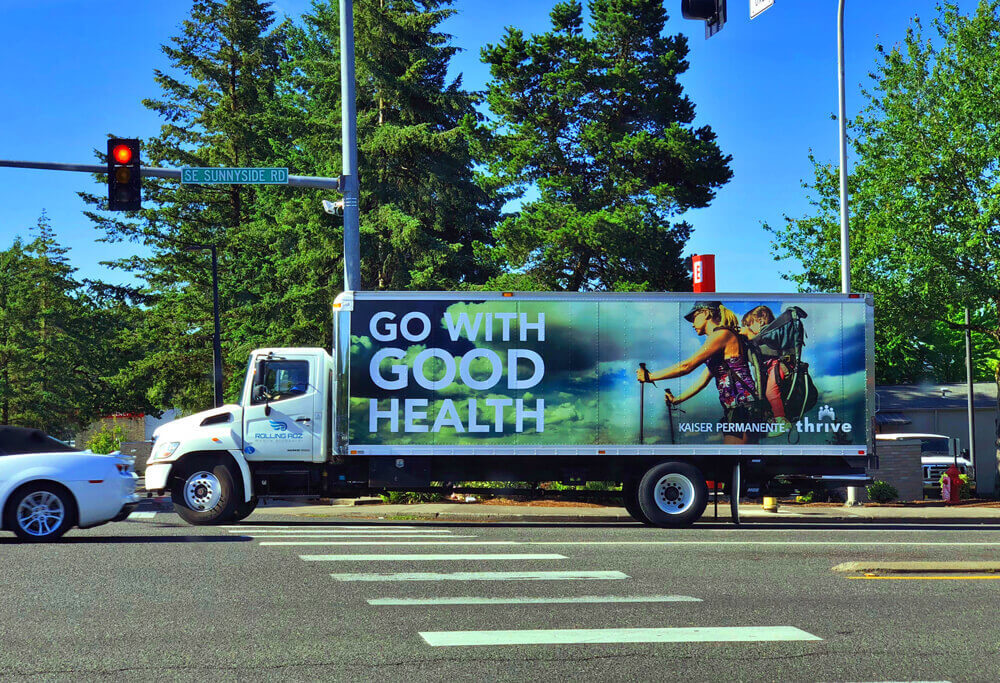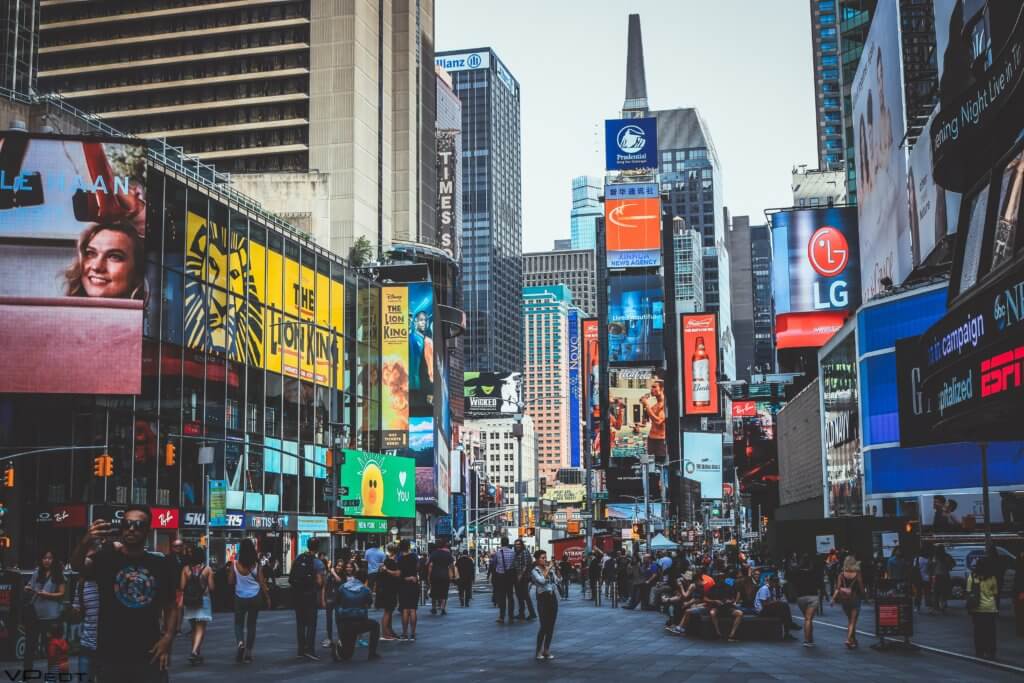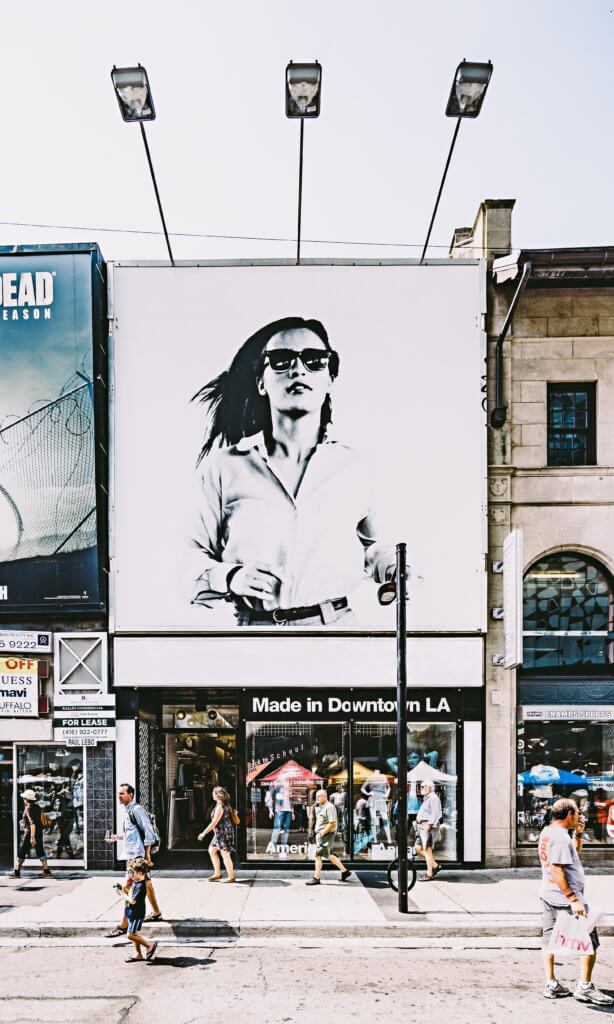Creating a successful advertising campaign often comes down to using the right medium for your message. For out-of-home advertising, there is a wide array of options out there. From busses to billboards, to vehicle wraps and bus shelters, ads to truck side advertising. Each medium comes with its own benefits and drawbacks. Depending on the scale of your campaign, using a blend of mediums may be just what is needed but those campaigns tend to be expensive and run the risk of oversaturating your audience.
In this blog, we will explore the benefits of two of these mediums: truck side advertising and traditional billboard advertising, as well as the drawbacks.
Truck Side Advertising
More than just company decals on truck side panels, today’s mobile billboard industry includes a wide variety of options—digital or vinyl wrap, with analytics or without, etc.—there is something for organizations of all sizes available.

Source https://www.outdoorbillboard.com
Benefits:
Versatility: As mentioned above, there is no one-size-fits-all approach with truck side advertising. Vinyl wrap ads can be placed on delivery trucks, garbage trucks, or postal trucks. This gives campaigns the ability to incorporate the vehicle itself in the campaign.
Portability: One of the biggest advantages of truck side advertising vs traditional billboards is that the trucks move through the city. Combining clever graphics and pre-planned routes, these mobile advertisements can pop up where people least expect them and move out just as quickly. The novelty of these ambulatory ads can cause a campaign to quickly go viral.
Fewer Restrictions: Here at Movia, we have worked on campaigns from one day in length to 52 weeks! Unlike traditional billboards, truck side advertising does not have time limits on how long campaigns have to last. As well, our customers get the benefit of avoiding the hassles that accompany traditional billboard campaigns like placement regulations and visual overcrowding.

Photo by Vlad Alexandru Popa from Pexels
Consider the above photo. How many billboards can you see? All of these billboards are competing with each other for the same audience’s attention and can easily be missed.
Truck Side Advertising is Immersive: Imagine a truck pulls up alongside as you walk down the street. Enveloping your sightline, you pause for a quick once over. As it rumbles to a stop, the driver comes out and offers you a pamphlet with more information. Modern truck side advertising allows advertisers the opportunity to directly engage with their target audience, creating a lasting impression.
Cost: Truck side advertising is cheaper than traditional billboard advertising. Making it easier for advertising budgets and allowing you to extend your reach.
Drawbacks:
Sustainability: It’s on everyone’s minds these days. How to create conversation while minimizing our carbon footprints. Whether it is concerns about vehicle emissions or contributions to road congestion, unless mobile truck advertisers take active steps to counter these issues, this option can be less environmentally sound. As responsible corporate partners, we have worked hard to create a net-zero mobile advertising strategy.
Visibility: On city streets, mobile billboards can get lost in the crowd. Their eye-level nature means that they are a part of the throng, not above it.
Traditional Billboard Advertising

Source Photo by Scott Webb from Pexels
Benefits
Visibility: With the right place, billboard advertisements and their sky-high graphics command attention from a distance. There is a reason why the billboards took off when interstates were developed. Especially on long stretches of country roads or highways, they provide a visual break from the horizon.
Location, Location, Location: Billboards are set in places where people will drive, walk, or cycle past. This means that instead of chasing your audience, they are coming to where you are—increasing your prospect base.
Logistics: Their ease of use is one of the reasons that traditional billboards have lasted as long as they have. There are no worries about vehicle breakdowns, LEDs burning out, or power outages (that can affect digital billboards). It takes only a few hours at most to paste an advertisement on the board and barring board-sheering high winds, the advertisement is secure until it is time for the campaign to end. This makes traditional billboards ideal for longer-term campaigns.
Drawbacks
Cost: Because you are renting the billboard space, and these billboards can easily dwarf some houses, they are one of the most expensive forms of OOH advertising out there. Billboards can run from $1500 for a traditional billboard to over $4000/ month for digital billboards.
Commitment: Part of the reason why billboards are so expensive is that billboard rentals generally require clients to rent the space in month-long blocks of time. And often more than one location at a time. This cost is often out of reach of smaller businesses or organizations.
Lack of Flexibility: With campaigns needing to last in terms of weeks or months, in order to rent the space, this can rule out guerilla marketing tactics or campaigns that are time-sensitive—needing to last days not weeks.
Lack of Immersion: Because they are set above eye-level, it is challenging for billboards to be immersive. Billboards are designed to work at a distance, with simple eye-catching graphics and simple text so that they can be understood in seconds. Their strengths often become weaknesses in that they cannot interact with audiences the way that truck side advertisements can.
Final Thoughts
One of the greatest challenges of any advertising campaign is determining how to reach your audience. With a multitude of media channels available, understanding which ones will work best for your campaign is crucial. Some campaigns will work better as traditional billboard campaigns, others as truck side advertising, or even a combination of both. We hope this article has helped you in determining which OOH medium will work best for your next campaign. We will be doing more comparative articles in the future, so check in again soon!


